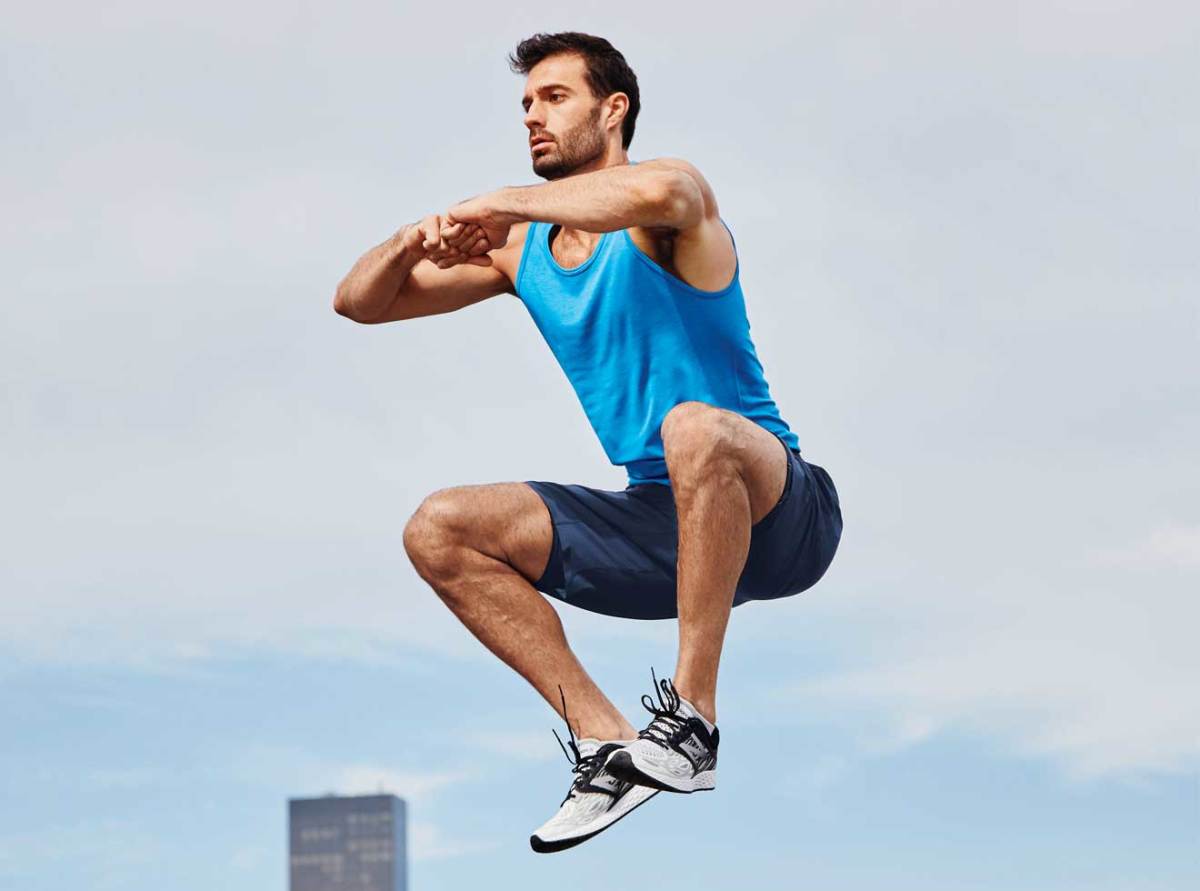

This will create an intense total-body cardio workout, and your muscles will be challenged to reach their fullest (and most tired.whew!) potential. Maybe you'll do mountain climbers, tuck jumps and squat thrusts, doing each move for 30 seconds to a minute, with a minute rest in between.
Tuck jumps. full#
You want to focus on movements that encourage a full range of motion through the hips, knees, and ankles. The best way to avoid injury if you are doing the movement is to do a proper warmup. As with many jump exercises, this an explosive movement-and when you land on the ground, these four areas of the body absorb the impact.



If you have a knee, ankle, back or hip problem, you're going to want to skip the tuck jumps altogether. Plus, your core is responsible for stabilizing and supporting your spine. If you're doing the move correctly, your lower abs will be engaged each time you bend down into the jumping position and as you propel upwards. Core: The tuck jump is just as much about the abs as it is the legs.In order to absorb the shock of the landing and protect your main joints, try to land softly. They'll also help extend your ankles to get your feet off the floor during the jump. Calves: You can think of your calves as a personal assistant to both of the muscles above.They'll be contracting each time you explode upward and when you lower your hips down into that final landing squat. Glutes and quads: These muscle groups act as a sort of spring during a tuck jump.Your heart rate will increase as soon as you begin, making sure that the necessary blood flow is reaching those targeted muscles groups. And because jumping is involved, you'll also be able to sneak in some cardio with this move. Reps/sets for best results: 5-10 reps with 30 seconds of rest in between Benefits Of Tuck JumpsĪ proper tuck jump will work your legs, core, glutes, and quads, giving you both the upper- and lower-body-strengthening exercise you want. To do this, engage your lower abs to help drive your knees up. So make sure you're jumping with knees tucked and your body shooting upwards toward your hands, rather than aiming backward towards your butt.
Tuck jumps. pro#
Pro tip: This is not meant to be a butt kick. Jump straight up, lifting knees to touch hands.Bend knees slightly and extend arms out at shoulder height, elbows bent and wide, palms facing floor.Start in standing position with feet hip-width apart.This drill is a progression drill for young athletes to learn before advancing into combination bounding.Ĭlick here for track and field, cross country, road running, and weight training programs designed for athletes and coaches of all ages and skill levels.Ĭlick here for track and field, cross country, road running, and weight training programs designed for athletes and coaches of all ages and skill levels. Jumpers need to learn the sequence of driving the take off knee back to the front side. This plyometric drill is a stationary single leg tuck jump, used for sprinters and jumpers, especially beginning level triple jumpers. 1 By Travis Geopfert Plyometric Training: Stationary Single Leg Tuck Jump


 0 kommentar(er)
0 kommentar(er)
